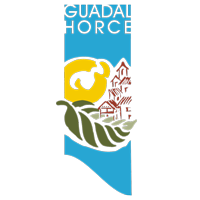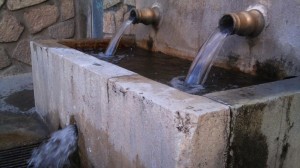Description: The water flows from two thick bronze pipes set in the stone front made of autochthonous limestone, cut by local stonemasons, the same as the pillar. The remaining water runs to a drain that goes under the plaza until reaching the convent, where it used to move an olive oil mil first and then end up irrigating part of the vegetable garden.
It is the oldest fountain of the village, maybe the one that the Romans worshipped as Divine and which figures in the share out of Anyquera as the fountain of Enebro “In the part of Leonis de Narváez and Juan d´Eslava and Malaver is the fountain of Enebro”. In 1539 it changed name to Fuente del Nogal (the fountain of the Walnut tree). In that same year, Lorenzo de Padilla y Eslava, Canon of the Cathedral of Málaga and Archdeacon of Ronda, chronicler of the Emperor Carlos V, famous Spanish humanist of noble origin and founder of the town of Valle de Abdalajís, ordered the construction of the new church of San Lorenzo in the palm grove that surrounded the fountain. However, the chosen place was soon ruled out, due to comments in 1559 about it not being a convenient emplacement, because the women of the village went there to wash. Over the years, houses were built around the fountain, forming the neighborhood of Barrio de la Fuente del Nogal during the eighteenth century.
Location: Plaza de la Virgen de los Dolores








